

| Cruise Region : South America / Antarctica, Pacific cruises |
| Company : Azamara Cruises |
| Ship : Azamara Quest |
| Journey Start : Mon 24 Jan 2028 |
| Journey End : Wed 22 Mar 2028 |
| Count Nights : 58 nights |
| Day | Date | Port | Arrival | Departure |
|---|---|---|---|---|
| 1 | 24.01 Mon | Valparaíso / Chile | 18:00 | |
| 2 | 25.01 Tue | Day at sea / Sea | ||
| 3 | 26.01 Wed | Puerto Montt / Chile | 11:30 | 20:00 |
| 4 | 27.01 Thu | Mykonos / Greece | 08:00 | 16:00 |
| 5 | 28.01 Fri | Puerto Chacabuco / Chile | 08:00 | 18:00 |
| 6 | 29.01 Sat | Day at sea / Sea | ||
| 7 | 30.01 Sun | Chilean fjords / Chile | 08:00 | |
| 8 | 31.01 Mon | Chilean fjords / Chile | 18:00 | |
| 9 | 1.02 Tue | Punta Arenas / Chile | 08:00 | |
| 10 | 2.02 Wed | Punta Arenas / Chile | 07:00 | |
| 11 | 3.02 Thu | Ushuaia / Argentina | 06:00 | 17:00 |
| 12 | 4.02 Fri | Day at sea / Sea | ||
| 13 | 5.02 Sat | Day at sea / Sea | ||
| 14 | 6.02 Sun | Day at sea / Sea | ||
| 15 | 7.02 Mon | Day at sea / Sea | ||
| 16 | 8.02 Tue | Day at sea / Sea | ||
| 17 | 9.02 Wed | Port Stanley, Falkland Islands / Great Britain | 08:00 | 17:00 |
| 18 | 10.02 Thu | Day at sea / Sea | ||
| 19 | 11.02 Fri | Day at sea / Sea | ||
| 20 | 12.02 Sat | Punta del Este / Uruguay | 09:00 | 18:00 |
| 21 | 13.02 Sun | Montevideo / Uruguay | 08:00 | |
| 22 | 14.02 Mon | Montevideo / Uruguay | 18:00 | |
| 23 | 15.02 Tue | Buenos Aires / Argentina | 06:00 | |
| 24 | 16.02 Wed | Buenos Aires / Argentina | 09:00 | |
| 25 | 17.02 Thu | Buenos Aires / Argentina | 18:00 | |
| 26 | 18.02 Fri | Montevideo / Uruguay | 08:00 | 17:00 |
| 27 | 19.02 Sat | Rio Grande - Rio Grande do Sul / Brazil | 14:00 | 21:00 |
| 28 | 20.02 Sun | Day at sea / Sea | ||
| 29 | 21.02 Mon | Porto Belo / Brazil | 07:00 | 18:00 |
| 30 | 22.02 Tue | SÃO FRANCISCO DO SUL | 07:00 | 18:00 |
| 31 | 23.02 Wed | Paranaguá | 07:00 | 20:00 |
| 32 | 24.02 Thu | Santos / Brazil | 08:30 | 22:00 |
| 33 | 25.02 Fri | Ilhabela / Brazil | 07:00 | 20:00 |
| 34 | 26.02 Sat | Paraty / Brazil | 07:00 | 23:00 |
| 35 | 27.02 Sun | Rio de Janeiro / Brazil | 08:00 | |
| 36 | 28.02 Mon | Rio de Janeiro / Brazil | 09:00 | |
| 37 | 29.02 Tue | Rio de Janeiro / Brazil | 14:00 | |
| 38 | 1.03 Wed | Day at sea / Sea | ||
| 39 | 2.03 Thu | Salvador / Brazil | 13:00 | |
| 40 | 3.03 Fri | Salvador / Brazil | 17:00 | |
| 41 | 4.03 Sat | Day at sea / Sea | ||
| 42 | 5.03 Sun | Natal / Brazil | 10:30 | 20:00 |
| 43 | 6.03 Mon | Day at sea / Sea | ||
| 44 | 7.03 Tue | Day at sea / Sea | ||
| 45 | 8.03 Wed | Belen / Brazil | 08:00 | 18:00 |
| 46 | 9.03 Thu | Day at sea / Sea | ||
| 47 | 10.03 Fri | Royal Oak | 08:00 | 17:00 |
| 48 | 11.03 Sat | Day at sea / Sea | ||
| 49 | 12.03 Sun | Scarborough / Trinidad and Tobago | 08:00 | 18:00 |
| 50 | 13.03 Mon | Bridgetown / Barbados | 08:00 | 18:00 |
| 51 | 14.03 Tue | St. George`s | 08:00 | 20:00 |
| 52 | 15.03 Wed | Castries / Saint Lucia | 08:00 | 20:00 |
| 53 | 16.03 Thu | Saint Pierre and Miquelon / France | 08:00 | 22:00 |
| 54 | 17.03 Fri | Roseau / Dominica | 08:00 | 17:00 |
| 55 | 18.03 Sat | PHILIPSBURG / Anguilla | 08:00 | 18:00 |
| 56 | 19.03 Sun | Tortola Road Town | 07:00 | 13:00 |
| 57 | 20.03 Mon | Day at sea / Sea | ||
| 58 | 21.03 Tue | Day at sea / Sea | ||
| 59 | 22.03 Wed | Miami / USA | 06:00 |
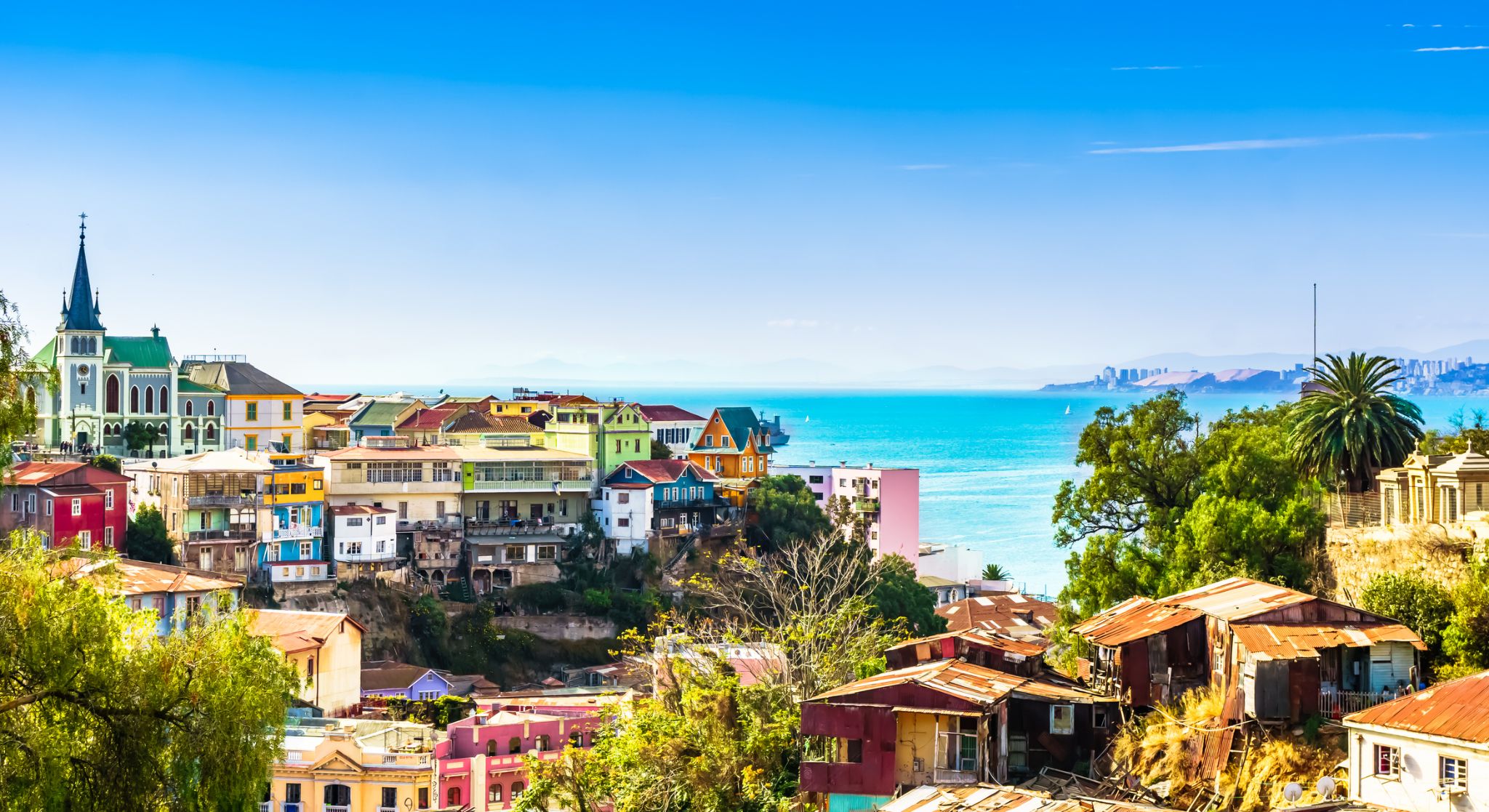

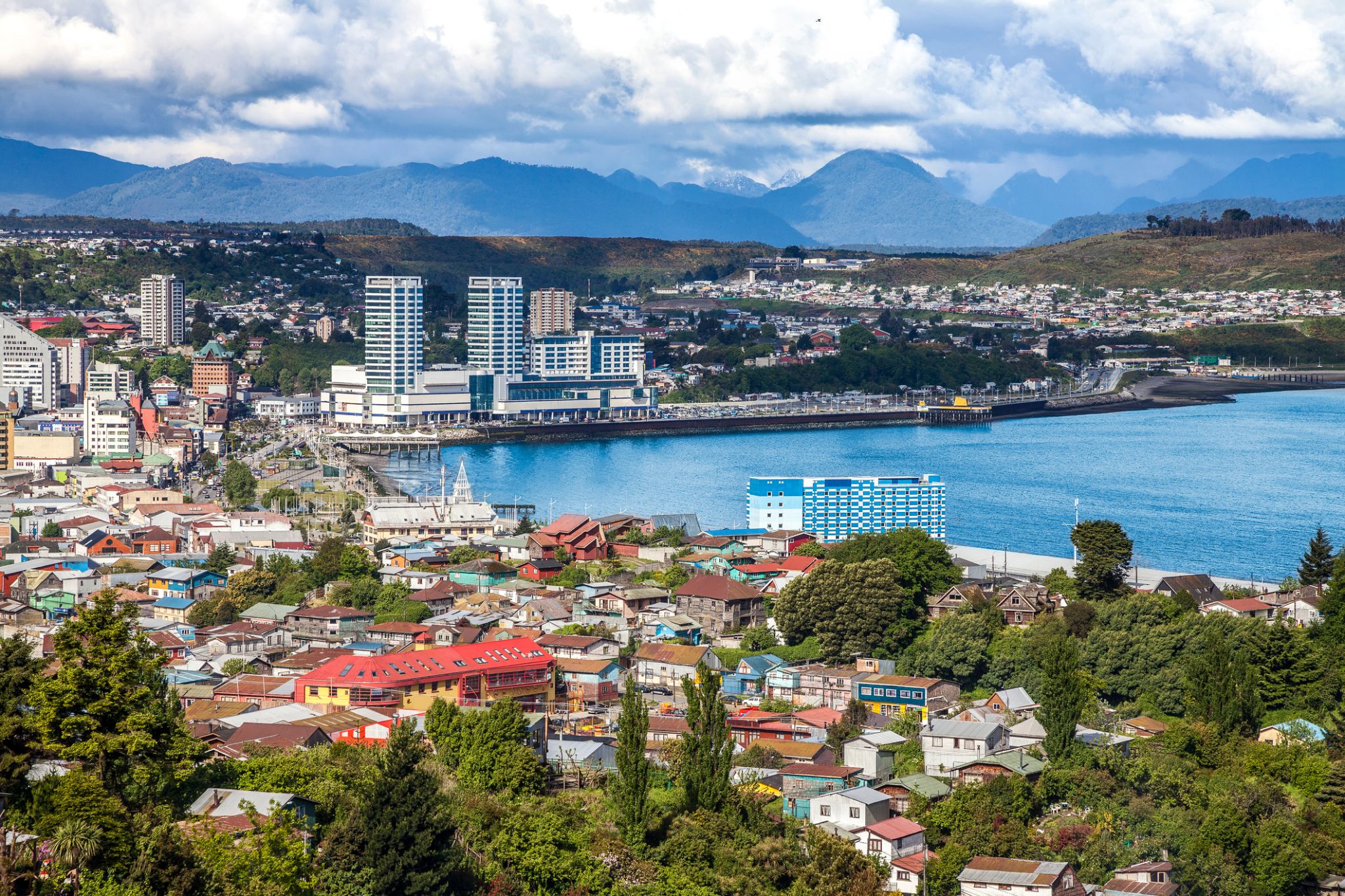
Puerto Montt is a port city and commune in southern Chile, located at the northern end of the Reloncaví Sound in the Llanquihue Province, Los Lagos Region, 1,055 km to the south of the capital, Santiago. The commune spans an area of 1,673 km2 (646 sq mi) and has a population of 245,902 in 2017. It is bounded by the communes of Puerto Varas to the north, Cochamó to the east and southeast, Calbuco to the southwest and Maullín and Los Muermos to the west.
Founded as late as 1853 during the German colonization of southern Chile, Puerto Montt soon outgrew older neighboring cities due to its strategic position at the southern end of the Chilean Central Valley being a gateway city into Chiloé Archipelago, Llanquihue and Nahuel Huapi lakes and Western Patagonia.
Puerto Montt has gained renown and grown significantly due to the rise of Chile as the second largest salmon producer of the world during the 1990s and 2000s. However, the Chilean salmon aquaculture crisis of the late 2000s resulted at least temporarily in severe unemployment and exposed weaknesses in the local economy. The city's cultural heritage mixes elements of Chiloé culture with German heritage although the city has attracted a significant number of newcomers from all over Chile in the last 30 years due to employment opportunities.

Mykonos is a Greek island, part of the Cyclades, lying between Tinos, Syros, Paros and Naxos. The island spans an area of 85.5 square kilometres (33.0 sq mi) and rises to an elevation of 341 metres (1,119 feet) at its highest point. There are 10,134 inhabitants (2011 census), most of whom live in the largest town, Mykonos, which lies on the west coast. The town is also known as Chora (i.e. the Town in Greek, following the common practice in Greece when the name of the island itself is the same as the name of the principal town).
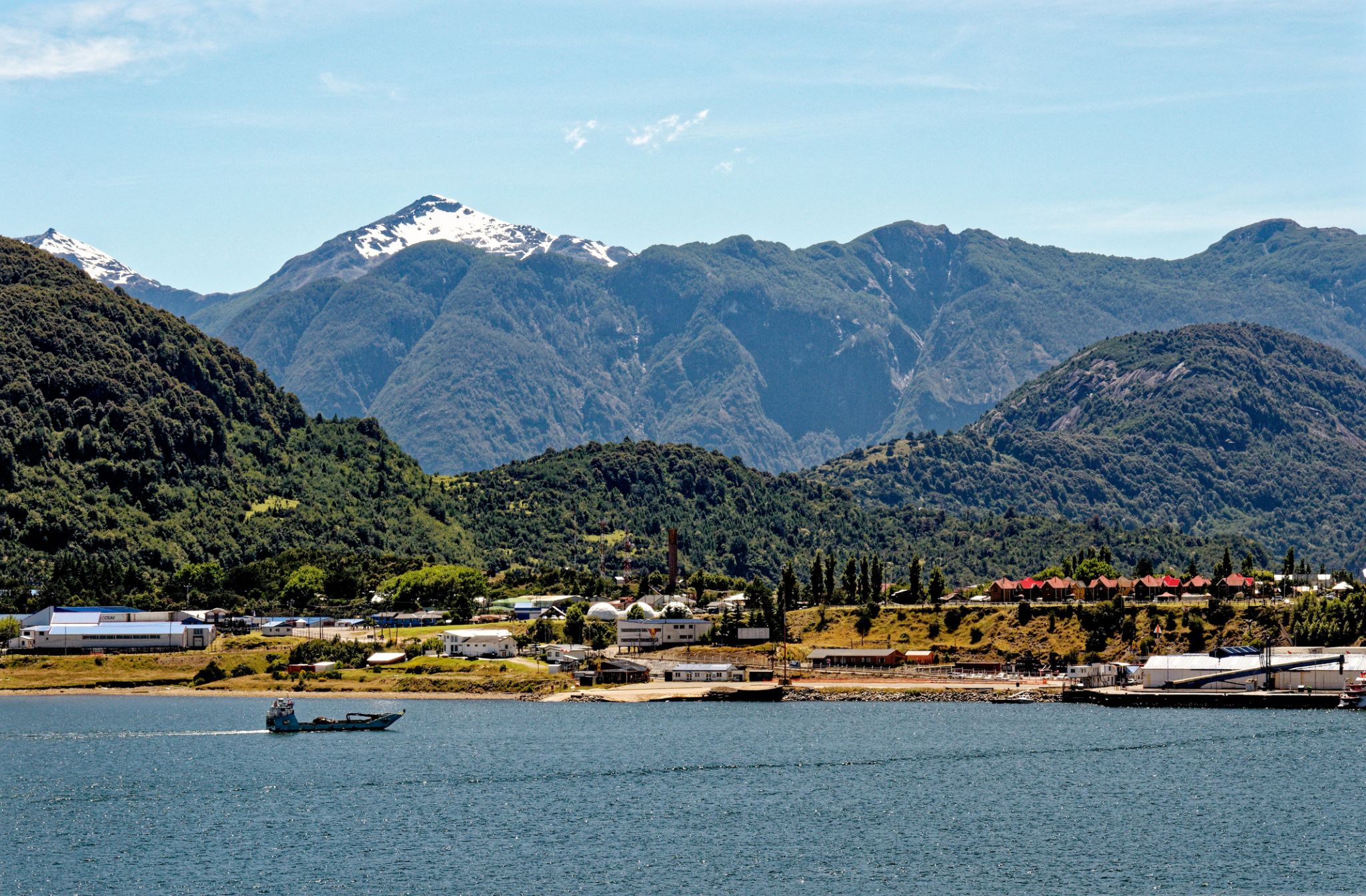

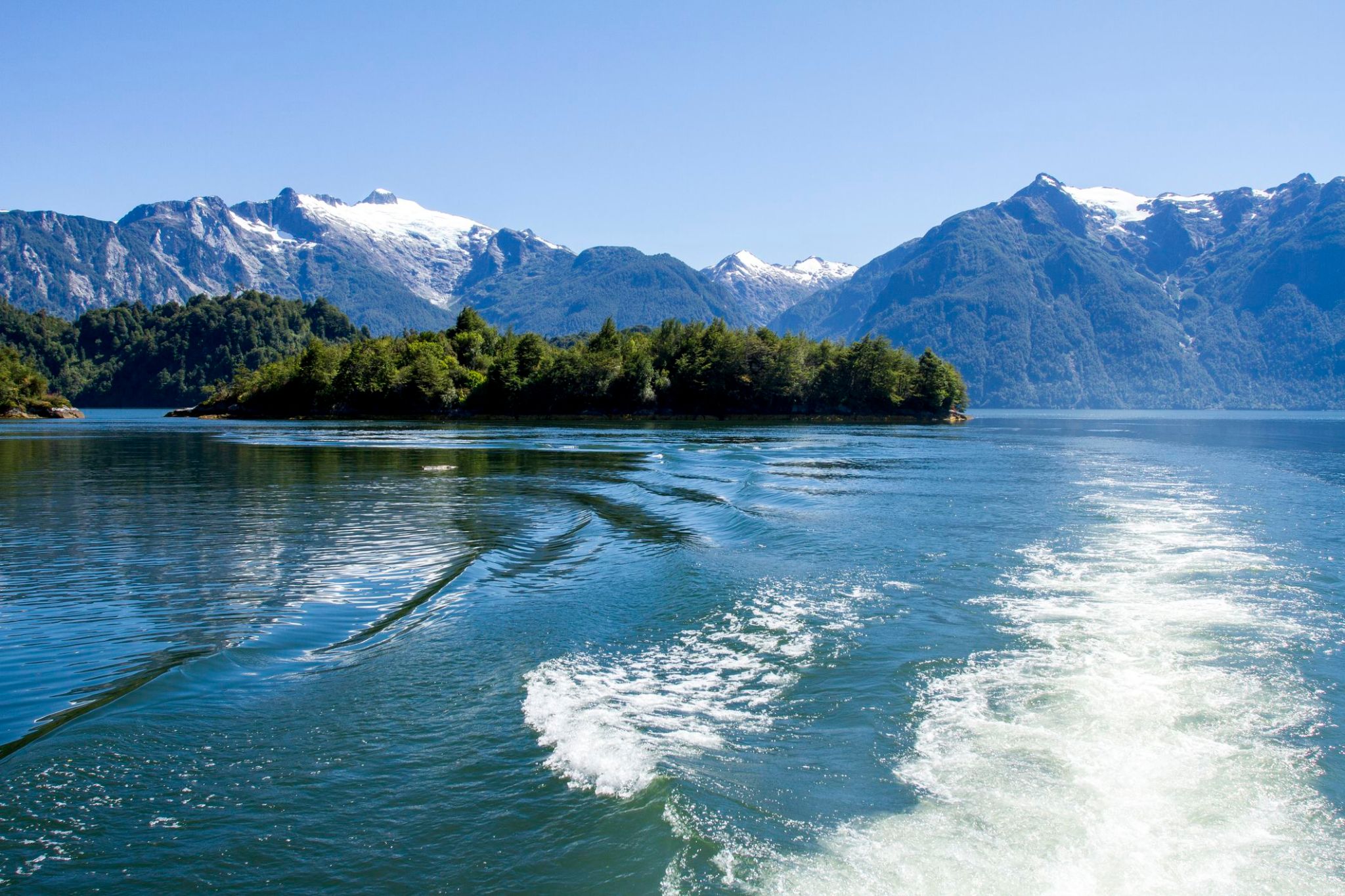
Not only Europe can boast the enchanting nature of the Norwegian fjords, but also Chilean fjords. The Chilean fjords consist of islands of various sizes, islets, enormous boulders, and ice formations emerging from the water, showcasing a range of colors — from snow-white to greenish. The glaciers on the rocks and mountain slopes create the feeling of theatrical scenery. The Chilean fjords delight visitors with their landscapes, where land and sea merge into a labyrinth of islands, fjords, rivers with tributaries, lakes, and hills covered in ancient trees.
The Chilean fjords are a unique place that has miraculously escaped human interference. When the mist dissipates under the sun, a magnificent panorama of the Andes, the cold waters of the Pacific Ocean, and lush emerald forests unfolds before your eyes.

Not only Europe can boast the enchanting nature of the Norwegian fjords, but also Chilean fjords. The Chilean fjords consist of islands of various sizes, islets, enormous boulders, and ice formations emerging from the water, showcasing a range of colors — from snow-white to greenish. The glaciers on the rocks and mountain slopes create the feeling of theatrical scenery. The Chilean fjords delight visitors with their landscapes, where land and sea merge into a labyrinth of islands, fjords, rivers with tributaries, lakes, and hills covered in ancient trees.
The Chilean fjords are a unique place that has miraculously escaped human interference. When the mist dissipates under the sun, a magnificent panorama of the Andes, the cold waters of the Pacific Ocean, and lush emerald forests unfolds before your eyes.
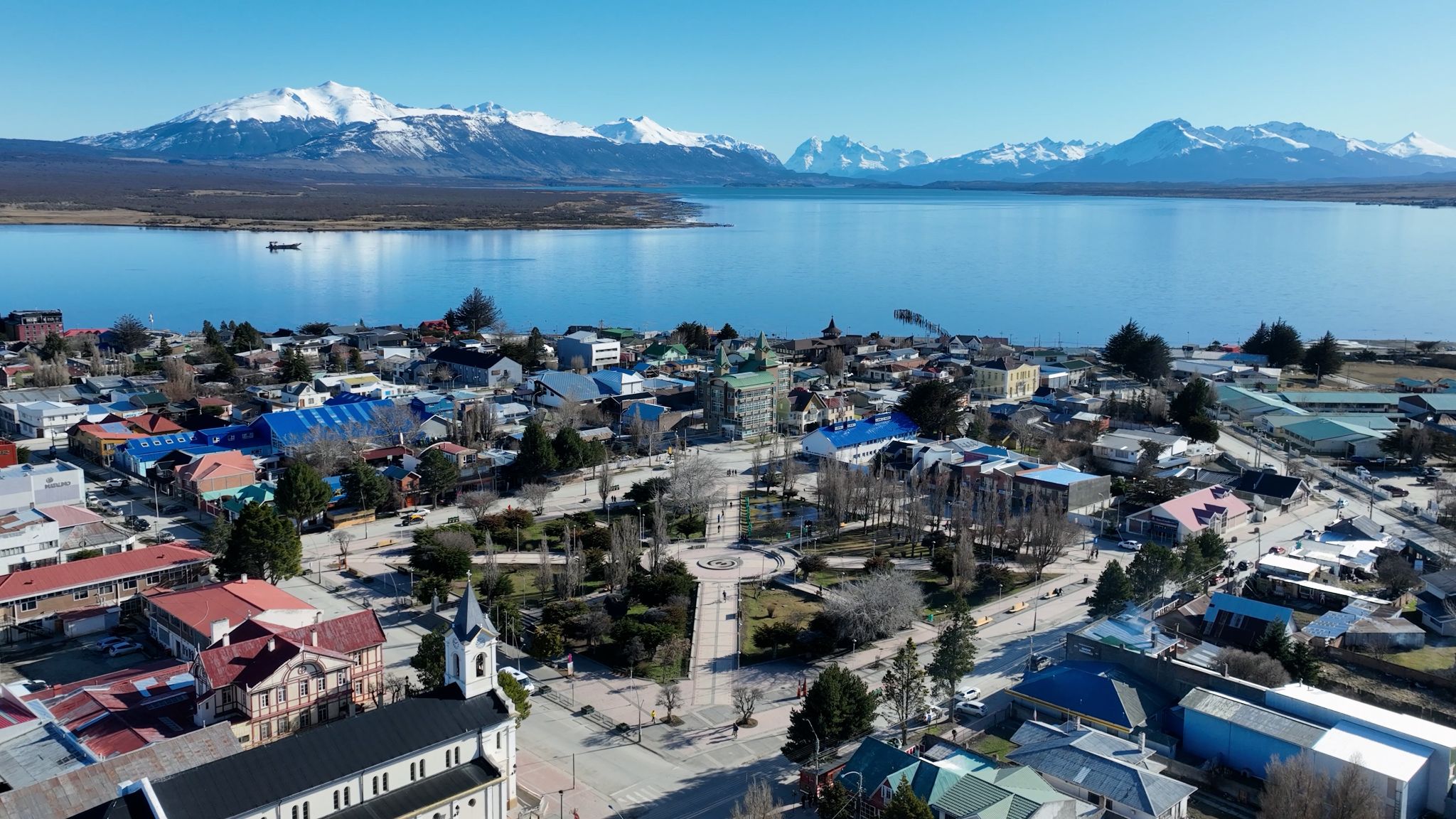

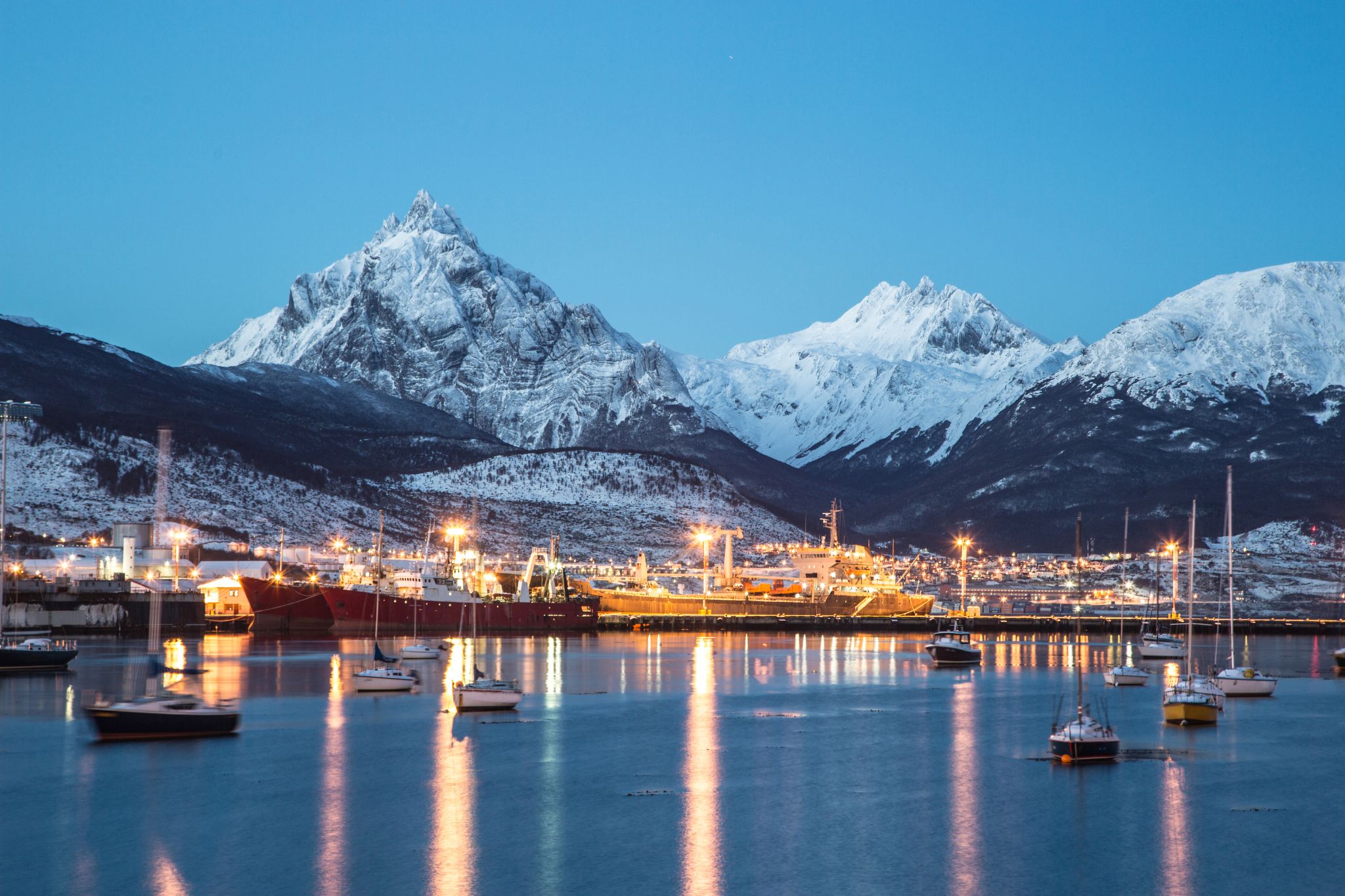
Ushuaia is the capital of Tierra del Fuego, Antártida e Islas del Atlántico Sur Province, Argentina. It is commonly regarded as the southernmost city in the world. Ushuaia is located in a wide bay on the southern coast of Isla Grande de Tierra del Fuego, bounded on the north by the Martial mountain range, and on the south by the Beagle Channel. It is the only municipality in the Department of Ushuaia, which has an area of 9,390 km2 (3,625 sq mi). It was founded October 12 of 1884 by Augusto Lasserreand is located on the shores of the Beagle Channel surrounded by the mountain range of the Martial Glacier, in the Bay of Ushuaia. Besides being an administrative center, it is a light industrial port and tourist hub.





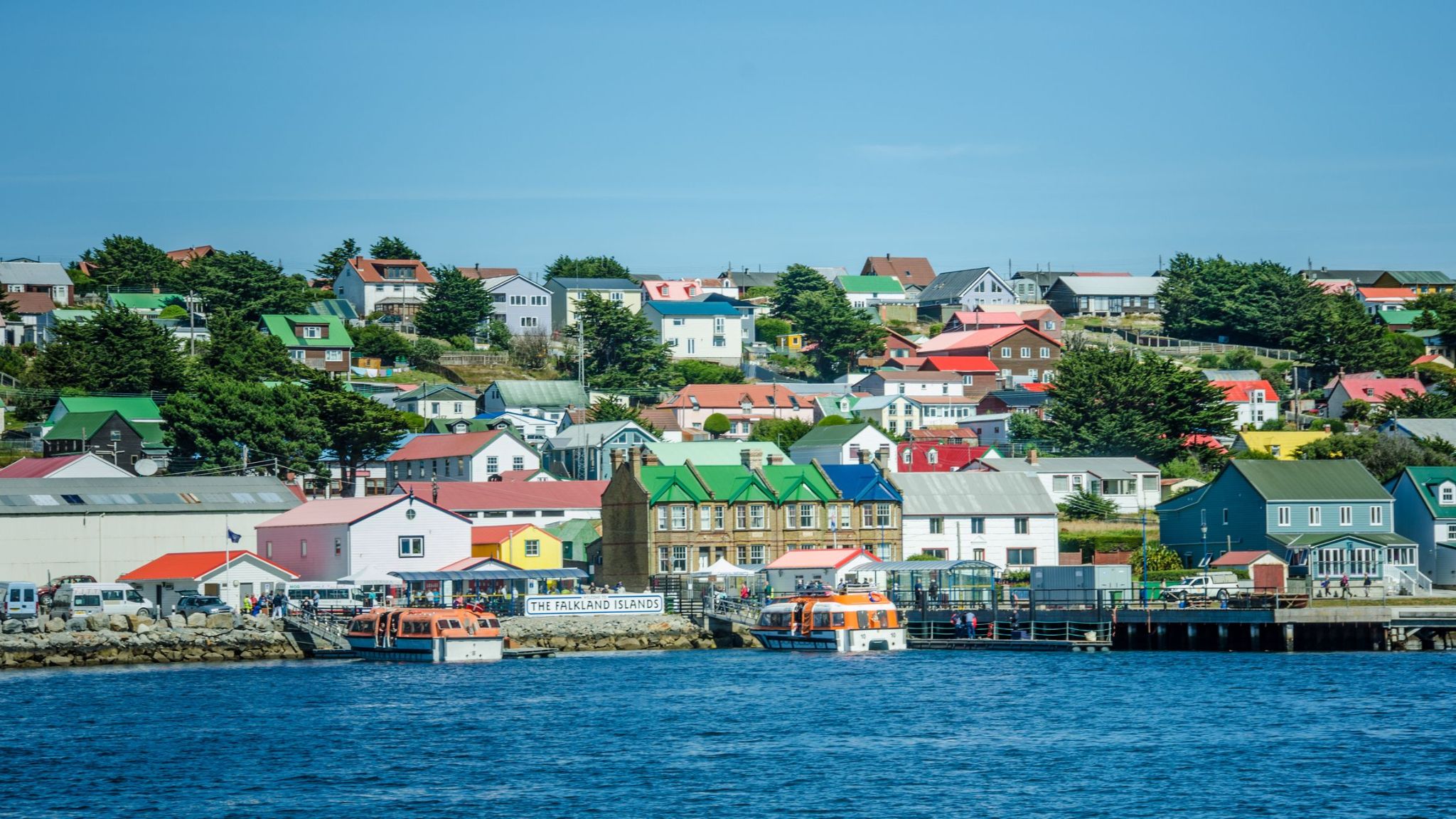
Port Stanley — The Edge of the World with a British Touch
Port Stanley is the main city and administrative center of the Falkland Islands, located on the eastern coast of East Falkland Island. It is the southernmost capital of the United Kingdom and one of the most sparsely populated capitals in the world, with around 2,500 residents. The city surprises with a harmony between wild nature and recognizable British traits: here you can find red phone booths, cozy pubs, English-style houses, and well-maintained gardens.
Surrounded by stunning landscapes of hilly plains, picturesque bays, and penguin colonies, Port Stanley offers unique views. The city also has an interesting museum dedicated to the history of the archipelago and the 1982 military conflict. This unique destination attracts nature lovers, those seeking tranquility, and travelers looking for unusual routes — it’s a place for those seeking true isolation at the edge of the world.


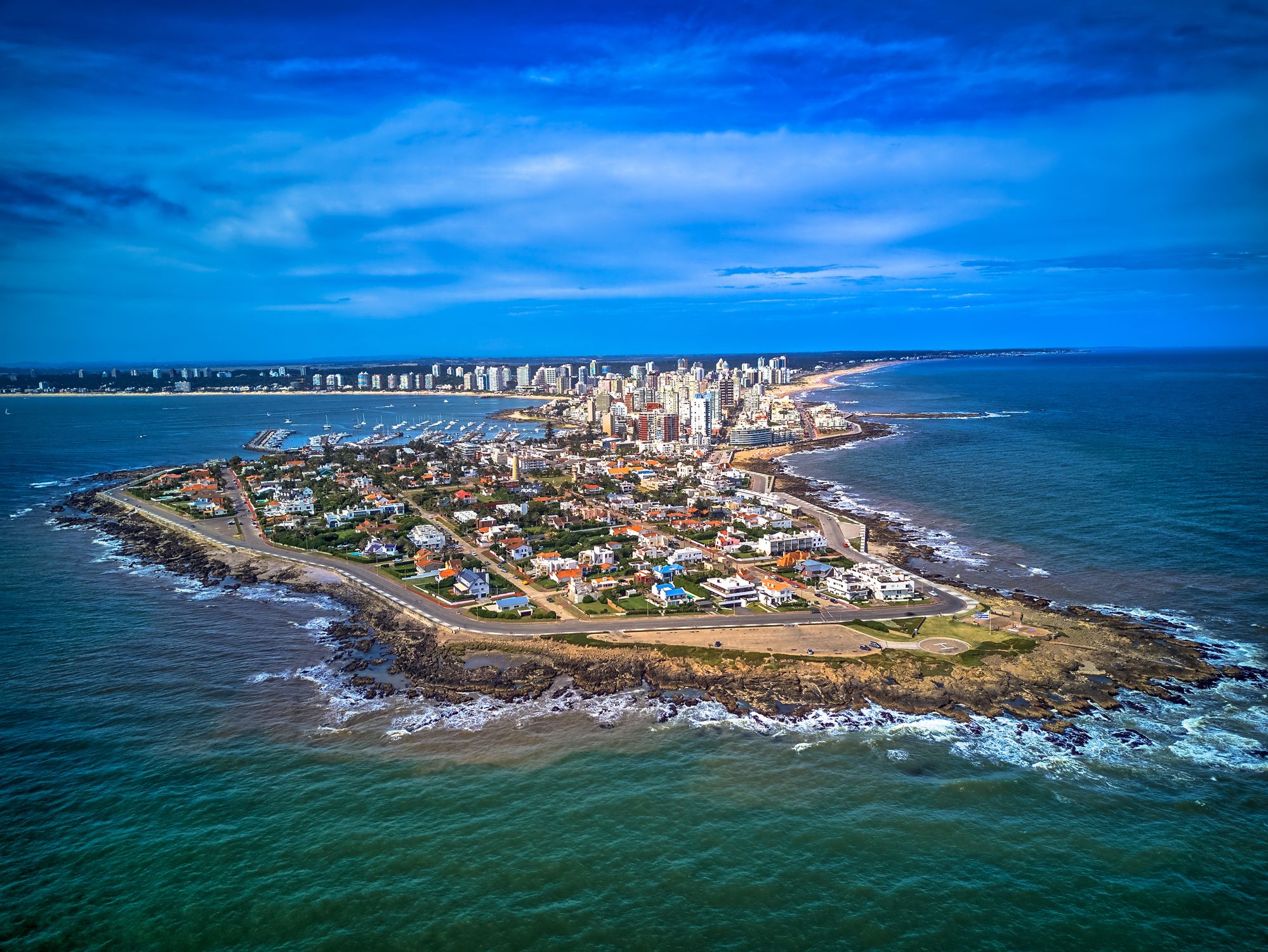
Punta del Este — Uruguay’s Premier Resort on the Atlantic Coast
Punta del Este is one of South America’s most renowned resort cities, located on Uruguay’s southern coast where the Atlantic Ocean meets the Río de la Plata estuary. The city is known for its unique contrasts—on one side, upscale neighborhoods with modern skyscrapers, yachts, and gourmet restaurants, and on the other, tranquil sandy beaches, scenic dunes, and surf-friendly waves. It’s often dubbed the “Monaco of South America” for its luxurious infrastructure and popularity among international celebrities.
Beyond the beaches, Punta del Este offers both cultural and natural attractions: the iconic “La Mano” sculpture, the Ralli Museum of contemporary art, and nearby islands home to sea lions. Visitors can explore the bohemian district of La Barra or enjoy sunset views by the Punta del Este lighthouse. The city comes alive during the summer season (December to February), when tourists from around the globe arrive in search of sunshine, comfort, and vibrant nightlife.
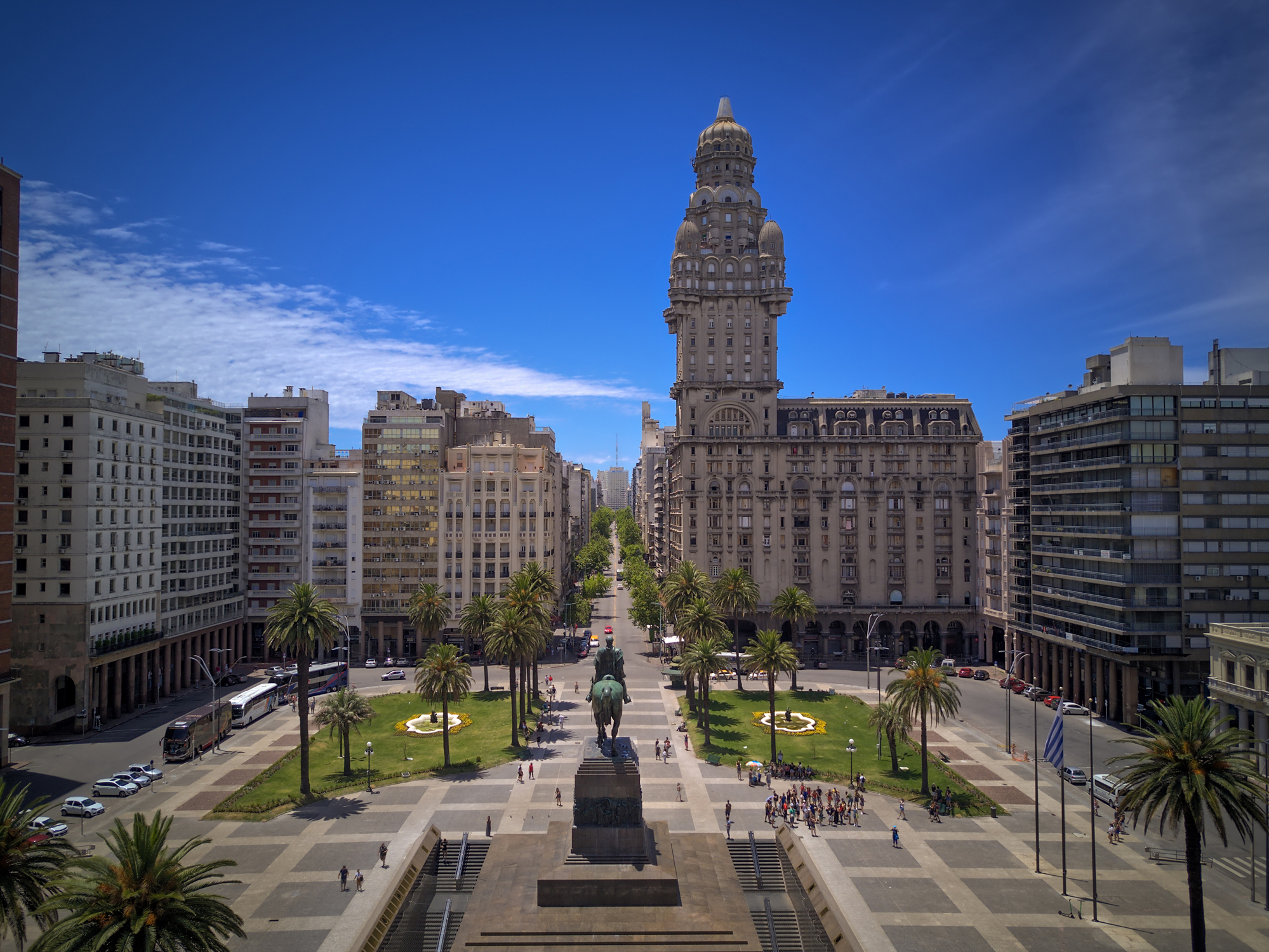
Montevideo is the capital and largest city of Uruguay. According to the 2011 census, the city proper has a population of 1,319,108 (about one-third of the country's total population) in an area of 201 square kilometres (78 sq mi). The southernmost capital city in the Americas, Montevideo is situated on the southern coast of the country, on the northeastern bank of the Río de la Plata.
The city was established in 1724 by a Spanish soldier, Bruno Mauricio de Zabala, as a strategic move amidst the Spanish-Portuguese dispute over the platine region. It was also under brief British rule in 1807. Montevideo is the seat of the administrative headquarters of Mercosur and ALADI, Latin America’s leading trade blocs, a position that entailed comparisons to the role of Brussels in Europe.

Montevideo is the capital and largest city of Uruguay. According to the 2011 census, the city proper has a population of 1,319,108 (about one-third of the country's total population) in an area of 201 square kilometres (78 sq mi). The southernmost capital city in the Americas, Montevideo is situated on the southern coast of the country, on the northeastern bank of the Río de la Plata.
The city was established in 1724 by a Spanish soldier, Bruno Mauricio de Zabala, as a strategic move amidst the Spanish-Portuguese dispute over the platine region. It was also under brief British rule in 1807. Montevideo is the seat of the administrative headquarters of Mercosur and ALADI, Latin America’s leading trade blocs, a position that entailed comparisons to the role of Brussels in Europe.
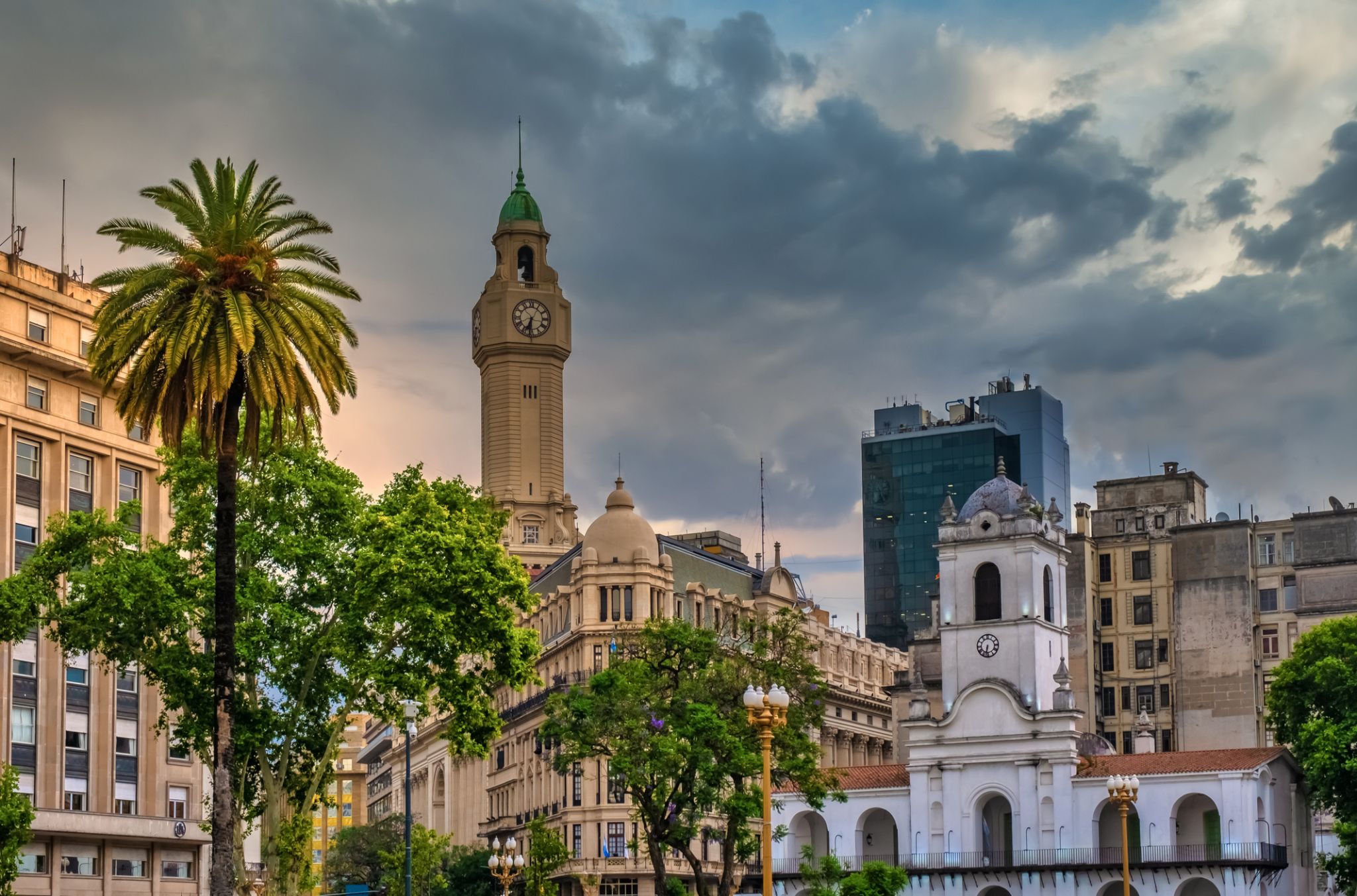
the capital city and chief port of Argentina, in the eastern central part of the country, on the Plata River; population 3,042,600 (est. 2008).

the capital city and chief port of Argentina, in the eastern central part of the country, on the Plata River; population 3,042,600 (est. 2008).

the capital city and chief port of Argentina, in the eastern central part of the country, on the Plata River; population 3,042,600 (est. 2008).

Montevideo is the capital and largest city of Uruguay. According to the 2011 census, the city proper has a population of 1,319,108 (about one-third of the country's total population) in an area of 201 square kilometres (78 sq mi). The southernmost capital city in the Americas, Montevideo is situated on the southern coast of the country, on the northeastern bank of the Río de la Plata.
The city was established in 1724 by a Spanish soldier, Bruno Mauricio de Zabala, as a strategic move amidst the Spanish-Portuguese dispute over the platine region. It was also under brief British rule in 1807. Montevideo is the seat of the administrative headquarters of Mercosur and ALADI, Latin America’s leading trade blocs, a position that entailed comparisons to the role of Brussels in Europe.





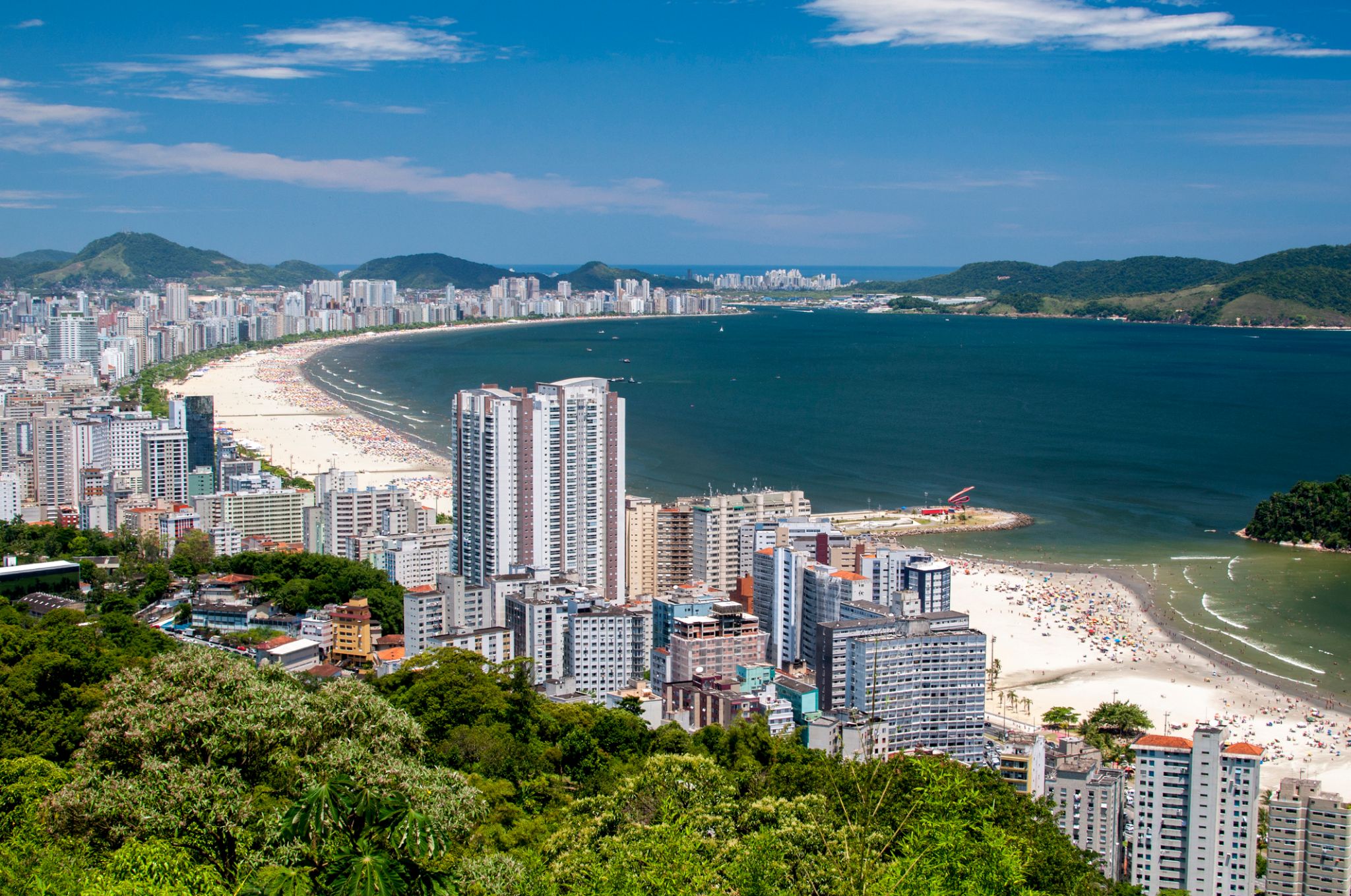
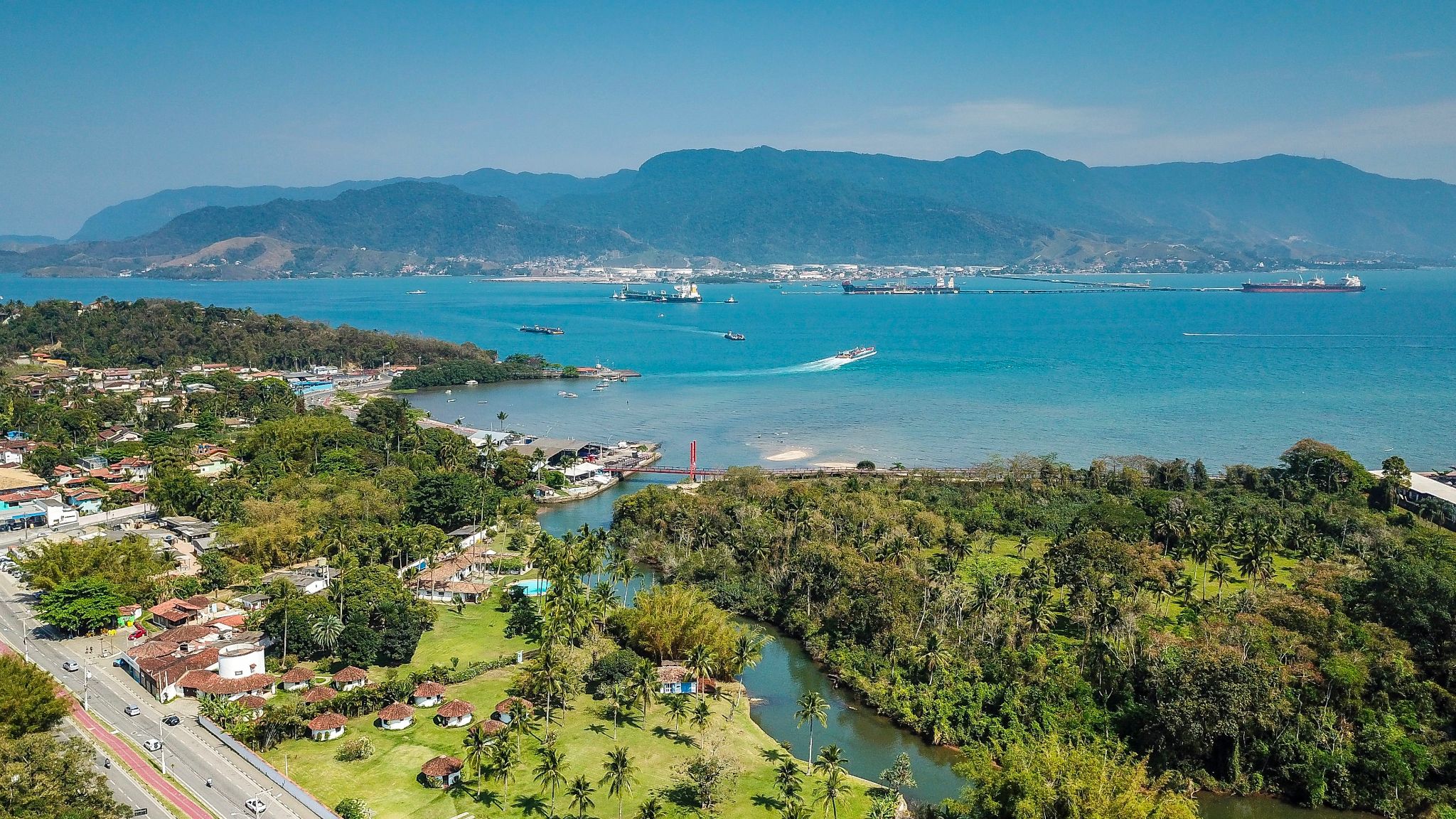
Ilhabela — A Brazilian Paradise for Nature and Adventure Enthusiasts
Ilhabela is a picturesque archipelago and municipality in the state of São Paulo, Brazil, comprising the main island and several smaller ones. The name translates from Portuguese as "beautiful island," which it truly embodies. Over 80% of the island's territory is protected within the Ilhabela State Park, featuring dense tropical forests, waterfalls, and hiking trails. It's a popular destination for sailors, divers, and those seeking solitude away from urban noise.
Ilhabela is renowned not only for its golden sandy beaches and clear waters but also for the unique opportunity to observe whales during their migration. The city frequently hosts sailing regattas, including international competitions. Tourists can explore colonial-era buildings and enjoy the ambiance of seaside restaurants offering fresh seafood dishes. Ilhabela combines pristine nature, active recreation, and a relaxed pace of life, making it an ideal destination for travel at any time of the year.
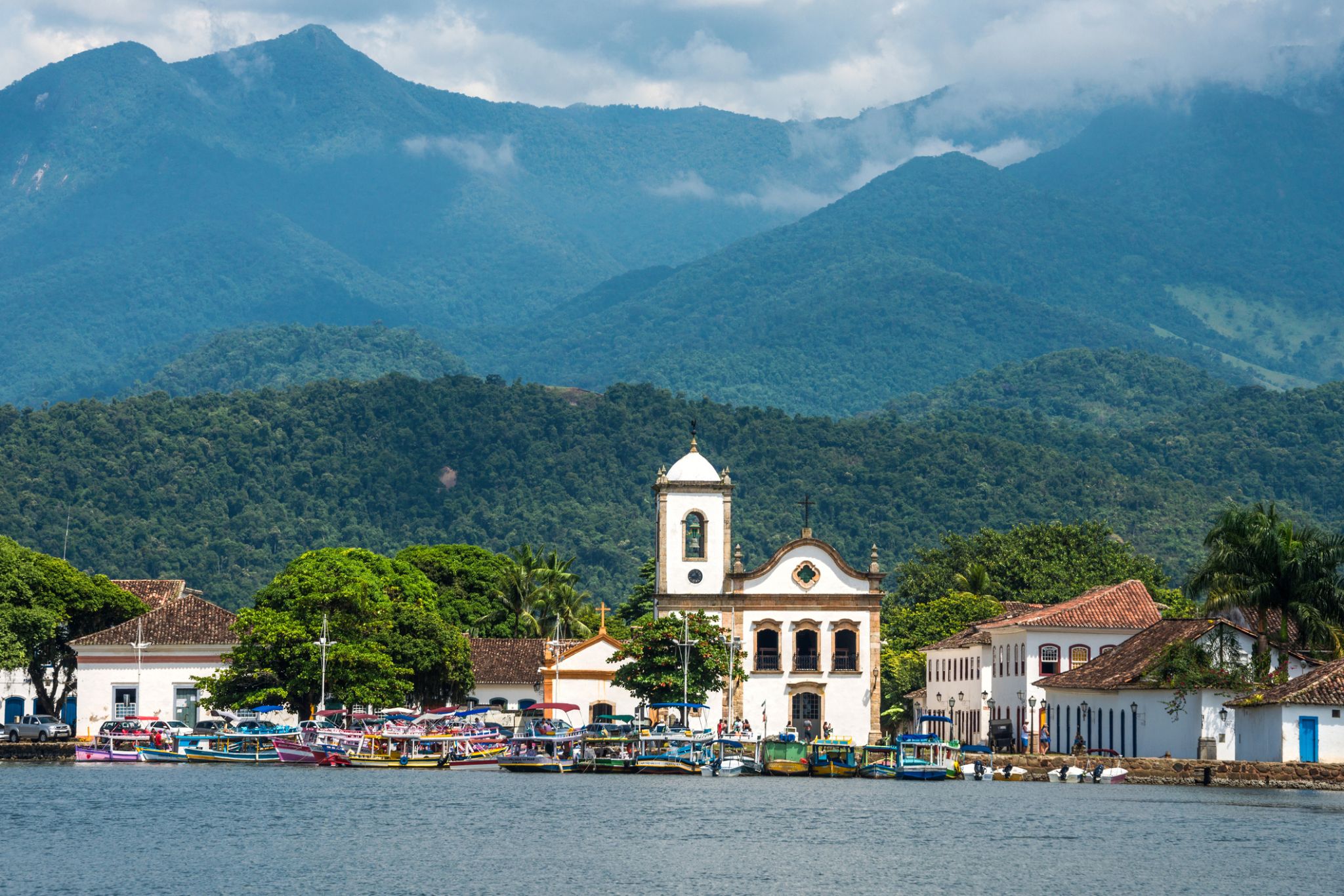
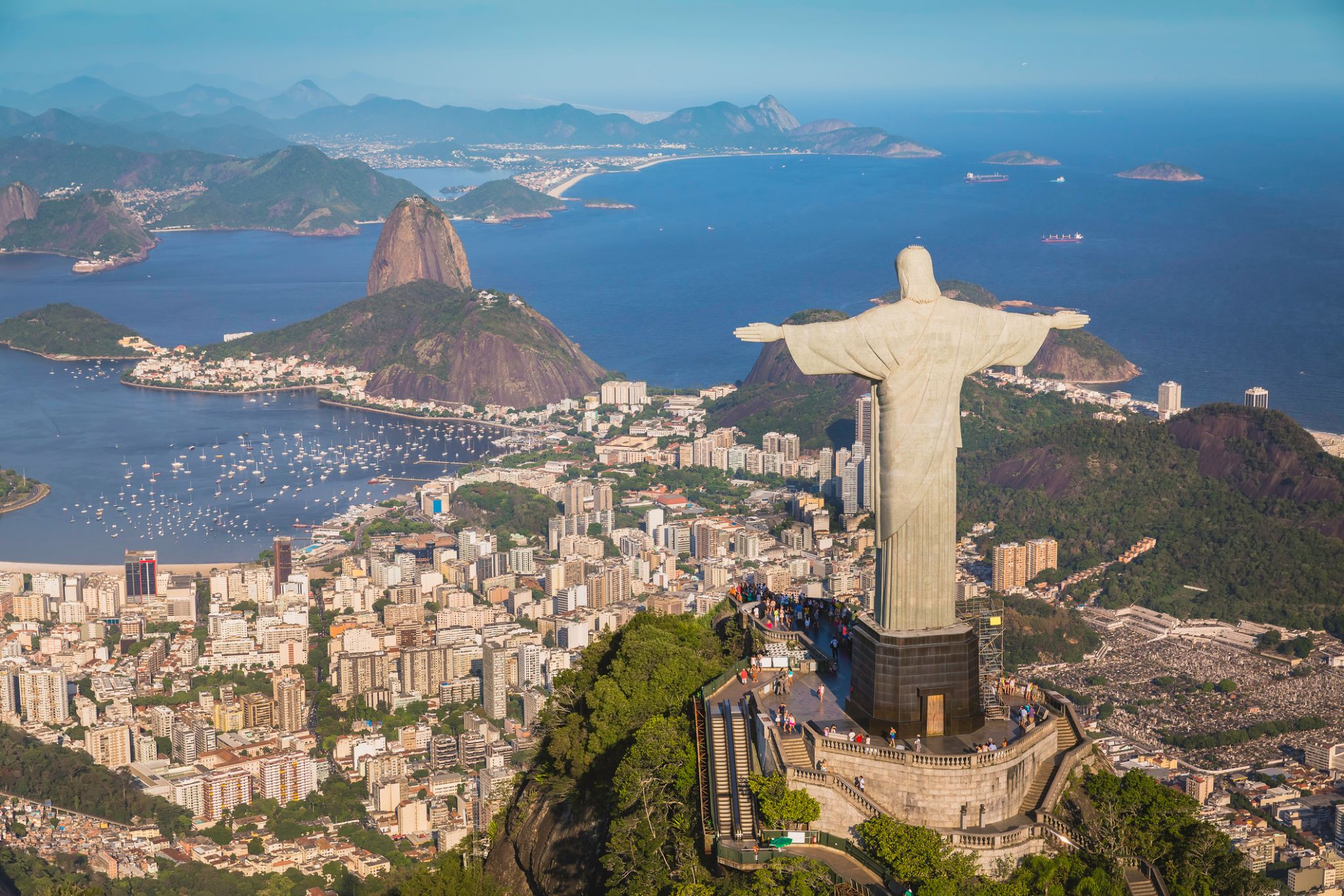
Rio de Janeiro is the second-most populous municipality in Brazil and the sixth-most populous in the Americas. The metropolis is anchor to the Rio de Janeiro metropolitan area, the second-most populous metropolitan area in Brazil and sixth-most populous in the Americas. Rio de Janeiro is the capital of the state of Rio de Janeiro, Brazil's third-most populous state. Part of the city has been designated as a World Heritage Site, named "Rio de Janeiro: CariocaLandscapes between the Mountain and the Sea", by UNESCO on 1 July 2012 as a Cultural Landscape.
Founded in 1565 by the Portuguese, the city was initially the seat of the Captaincy of Rio de Janeiro, a domain of the Portuguese Empire. Later, in 1763, it became the capital of the State of Brazil, a state of the Portuguese Empire. In 1808, when the Portuguese Royal Court transferred itself from Portugal to Brazil, Rio de Janeiro became the chosen seat of the court of Queen Maria I of Portugal, who subsequently, in 1815, under the leadership of her son, the Prince Regent, and future King João VI of Portugal, raised Brazil to the dignity of a kingdom, within the United Kingdom of Portugal, Brazil, and Algarves. Rio stayed the capital of the pluricontinental Lusitanian monarchy until 1822, when the War of Brazilian Independence began. This is one of the few instances in history that the capital of a colonising country officially shifted to a city in one of its colonies. Rio de Janeiro subsequently served as the capital of the independent monarchy, the Empire of Brazil, until 1889, and then the capital of a republican Brazil until 1960 when the capital was transferred to Brasília.

Rio de Janeiro is the second-most populous municipality in Brazil and the sixth-most populous in the Americas. The metropolis is anchor to the Rio de Janeiro metropolitan area, the second-most populous metropolitan area in Brazil and sixth-most populous in the Americas. Rio de Janeiro is the capital of the state of Rio de Janeiro, Brazil's third-most populous state. Part of the city has been designated as a World Heritage Site, named "Rio de Janeiro: CariocaLandscapes between the Mountain and the Sea", by UNESCO on 1 July 2012 as a Cultural Landscape.
Founded in 1565 by the Portuguese, the city was initially the seat of the Captaincy of Rio de Janeiro, a domain of the Portuguese Empire. Later, in 1763, it became the capital of the State of Brazil, a state of the Portuguese Empire. In 1808, when the Portuguese Royal Court transferred itself from Portugal to Brazil, Rio de Janeiro became the chosen seat of the court of Queen Maria I of Portugal, who subsequently, in 1815, under the leadership of her son, the Prince Regent, and future King João VI of Portugal, raised Brazil to the dignity of a kingdom, within the United Kingdom of Portugal, Brazil, and Algarves. Rio stayed the capital of the pluricontinental Lusitanian monarchy until 1822, when the War of Brazilian Independence began. This is one of the few instances in history that the capital of a colonising country officially shifted to a city in one of its colonies. Rio de Janeiro subsequently served as the capital of the independent monarchy, the Empire of Brazil, until 1889, and then the capital of a republican Brazil until 1960 when the capital was transferred to Brasília.

Rio de Janeiro is the second-most populous municipality in Brazil and the sixth-most populous in the Americas. The metropolis is anchor to the Rio de Janeiro metropolitan area, the second-most populous metropolitan area in Brazil and sixth-most populous in the Americas. Rio de Janeiro is the capital of the state of Rio de Janeiro, Brazil's third-most populous state. Part of the city has been designated as a World Heritage Site, named "Rio de Janeiro: CariocaLandscapes between the Mountain and the Sea", by UNESCO on 1 July 2012 as a Cultural Landscape.
Founded in 1565 by the Portuguese, the city was initially the seat of the Captaincy of Rio de Janeiro, a domain of the Portuguese Empire. Later, in 1763, it became the capital of the State of Brazil, a state of the Portuguese Empire. In 1808, when the Portuguese Royal Court transferred itself from Portugal to Brazil, Rio de Janeiro became the chosen seat of the court of Queen Maria I of Portugal, who subsequently, in 1815, under the leadership of her son, the Prince Regent, and future King João VI of Portugal, raised Brazil to the dignity of a kingdom, within the United Kingdom of Portugal, Brazil, and Algarves. Rio stayed the capital of the pluricontinental Lusitanian monarchy until 1822, when the War of Brazilian Independence began. This is one of the few instances in history that the capital of a colonising country officially shifted to a city in one of its colonies. Rio de Janeiro subsequently served as the capital of the independent monarchy, the Empire of Brazil, until 1889, and then the capital of a republican Brazil until 1960 when the capital was transferred to Brasília.

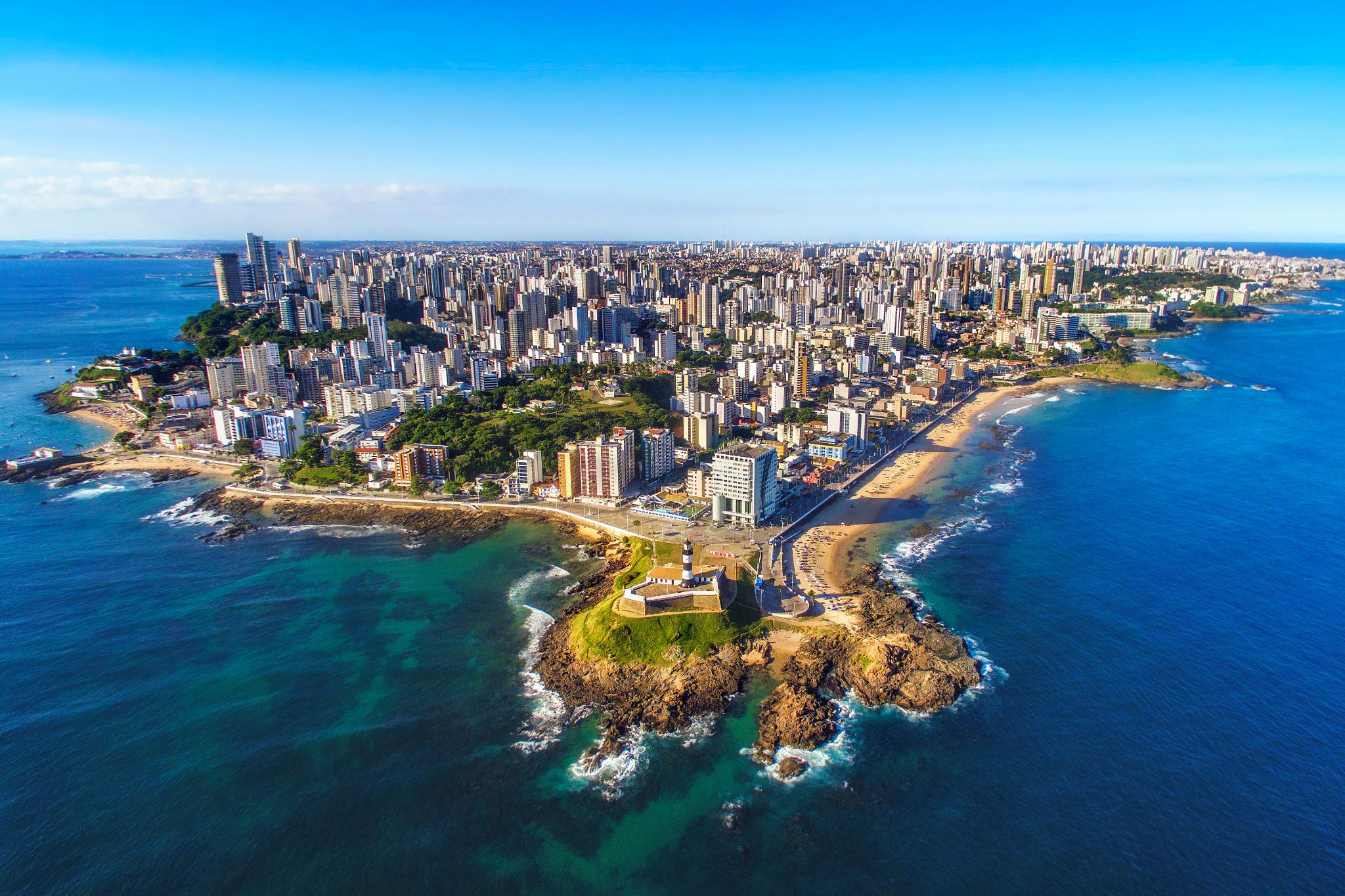
Salvador is the capital of Bahia state and was formerly the first capital of Brazil. Salvador is known for its endless number of churches, as well as for being a land of majestic fortresses. After visiting these places, it is also worth taking a look at the Chapada Diamantina National Park – the most interesting natural park in Brazil. In Salvador, there reigns an atmosphere of joy, revelry, and holidays – this is due to the fact that the local population was influenced by Africa. In Salvador, you can always admire the natural beauty of this area. You will be enchanted by the sensuality of this land, and you will be able to discover a piece of its mysterious power.

Salvador is the capital of Bahia state and was formerly the first capital of Brazil. Salvador is known for its endless number of churches, as well as for being a land of majestic fortresses. After visiting these places, it is also worth taking a look at the Chapada Diamantina National Park – the most interesting natural park in Brazil. In Salvador, there reigns an atmosphere of joy, revelry, and holidays – this is due to the fact that the local population was influenced by Africa. In Salvador, you can always admire the natural beauty of this area. You will be enchanted by the sensuality of this land, and you will be able to discover a piece of its mysterious power.

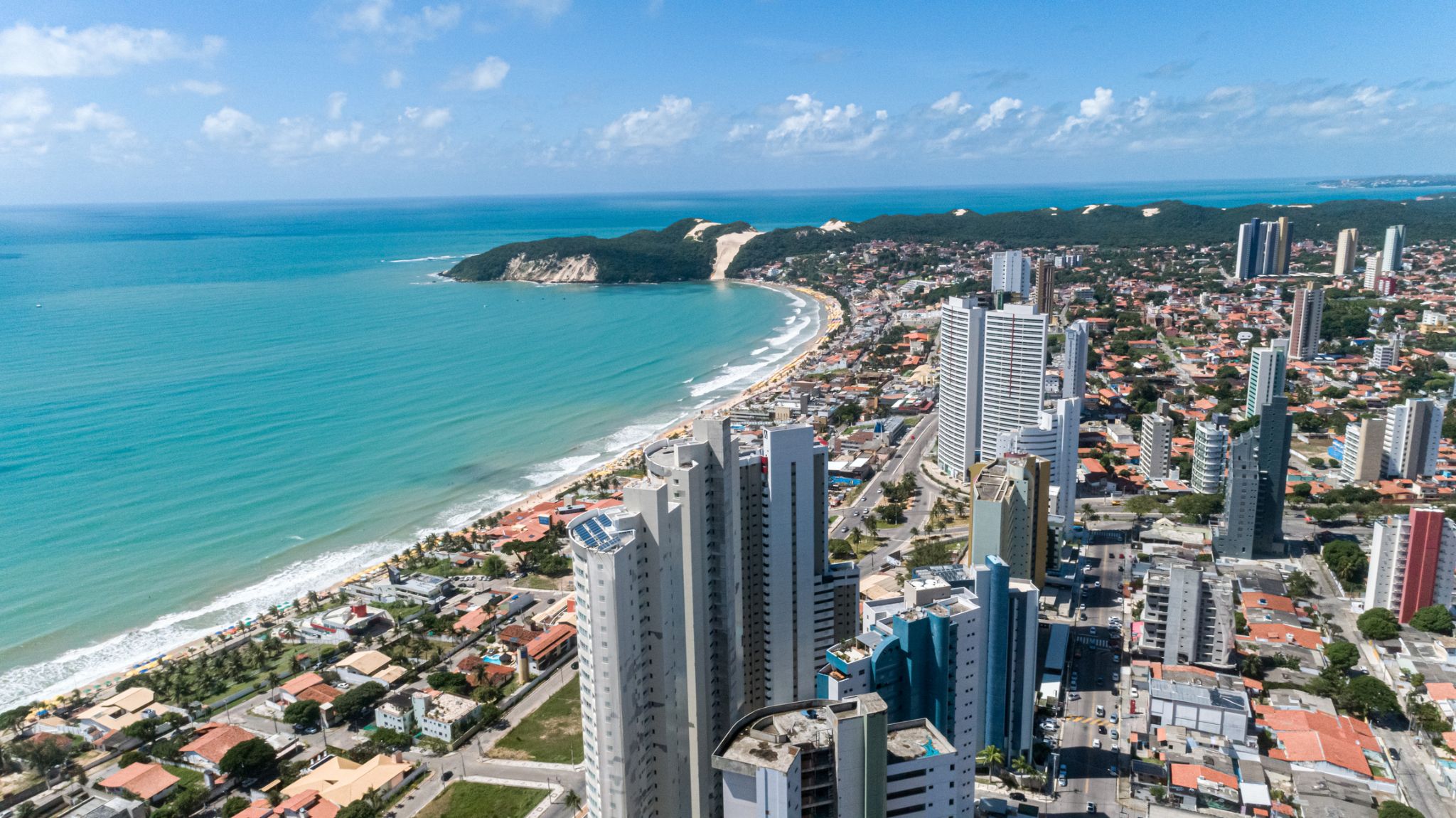






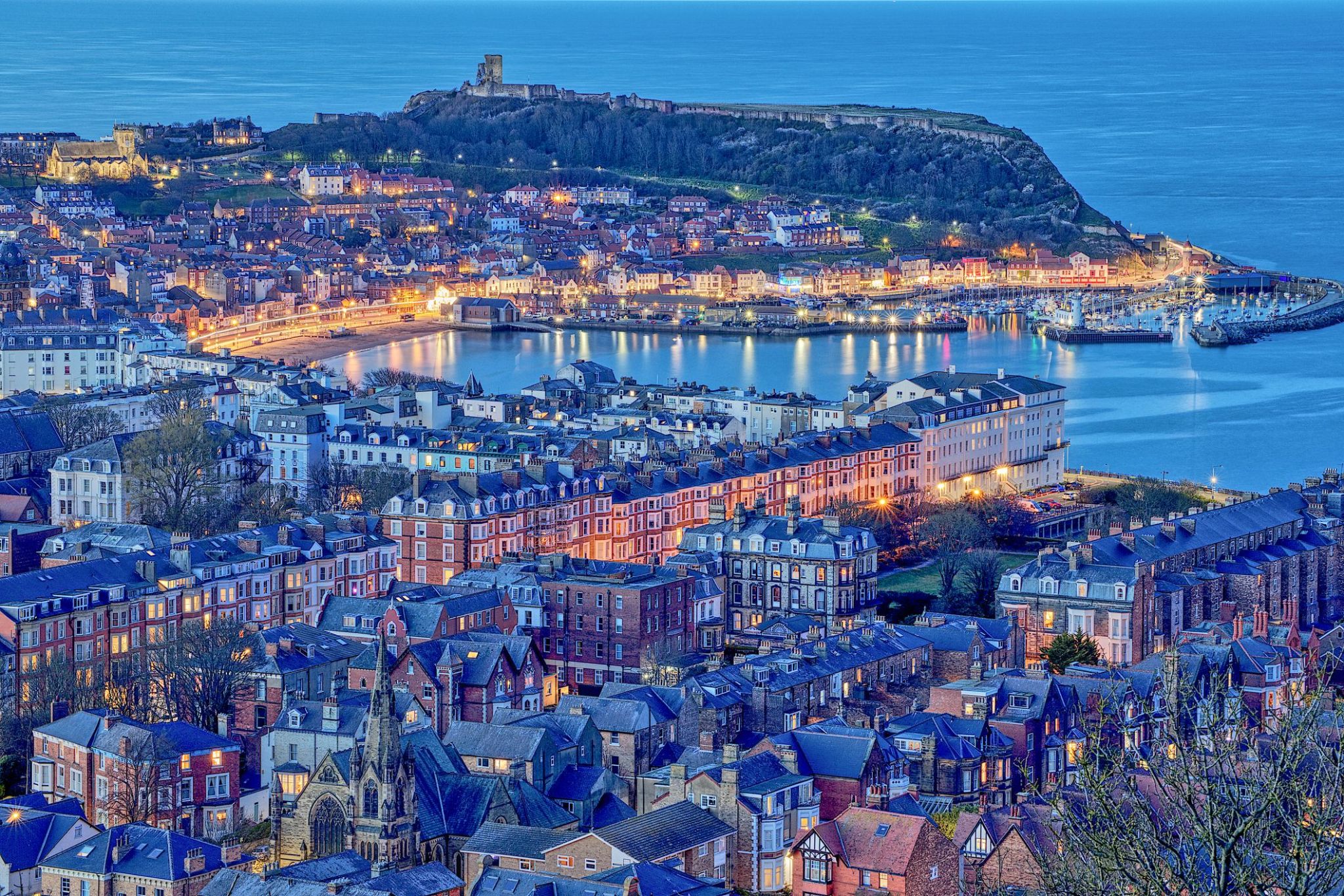
Scarborough (Tobago) is a charming town located on the eastern coast of the island of Tobago in the Caribbean Sea. As the capital of the island, it serves as the cultural and historical heart of Tobago. The town is known for its picturesque streets, vibrant markets, and old buildings that blend harmoniously with modern architecture. One of the main landmarks is the historic St. Anne’s Church, built in 1770, which remains an important part of the town’s heritage. Visitors are also drawn to the local market, where fresh fruits, spices, and handmade crafts showcase the island’s rich traditions.
Beyond its cultural and historical appeal, Scarborough offers travelers stunning natural surroundings. Nearby beaches with white sand and crystal-clear waters are perfect for swimming and diving. Pleasant Bay, popular among tourists, offers scenic views and a colorful underwater world. Scarborough is also an ideal base for exploring Tobago’s nature reserves and enjoying active outdoor adventures.
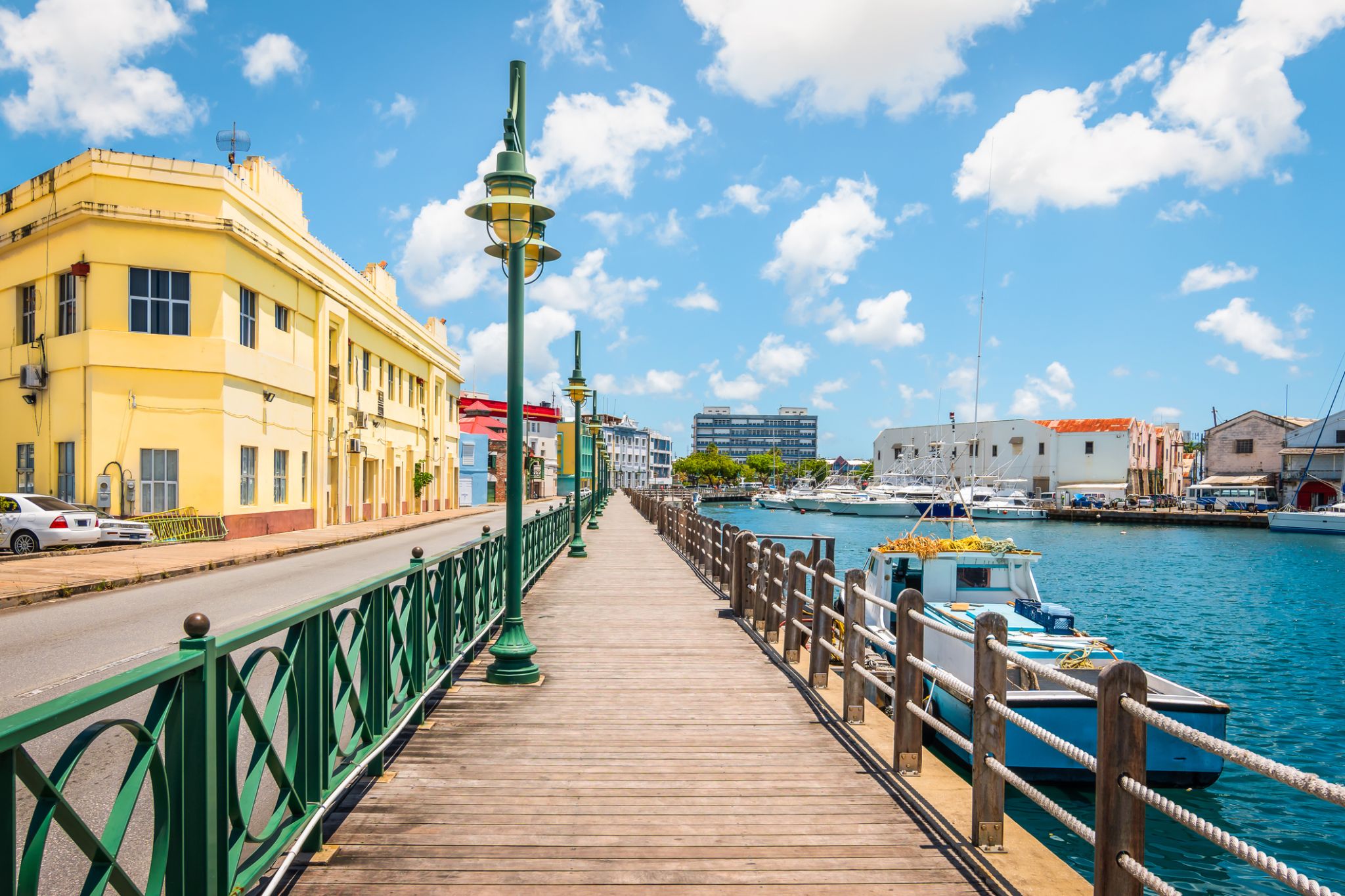
Bridgetown is the capital and largest city of Barbados. Formerly The Town of Saint Michael, the Greater Bridgetown area is located within the parish of Saint Michael. Bridgetown is sometimes locally referred to as "The City", but the most common reference is simply "Town". As of 2014, its metropolitan population stands at roughly 110,000.
The Bridgetown port, found along Carlisle Bay (at 13.106°N 59.632°W) lies on the southwestern coast of the island. Parts of the Greater Bridgetown area (as roughly defined by the Ring Road Bypass or more commonly known as the ABC Highway), sit close to the borders of the neighbouring parishes Christ Church and St. James. The Grantley Adams International Airport for Barbados, is located 16 kilometres (10 mi) southeast of Bridgetown city centre, and has daily flights to major cities in the United Kingdom, United States, Canada and the Caribbean. There is no longer a local municipal government, but it is a constituency of the national Parliament. During the short-lived 1950s-1960s Federation of the British West Indian Territories, Bridgetown was one of three capital cities within the region being considered to be the Federal capital of region.
The present-day location of the city was established by English settlers in 1628; a previous settlement under the authority of Sir William Courten was at St. James Town. Bridgetown is a major West Indies tourist destination, and the city acts as an important financial, informatics, convention centre, and cruise ship port of call in the Caribbean region. On 25 June 2011, "Historic Bridgetown and its Garrison" was added as a World Heritage Site of UNESCO.

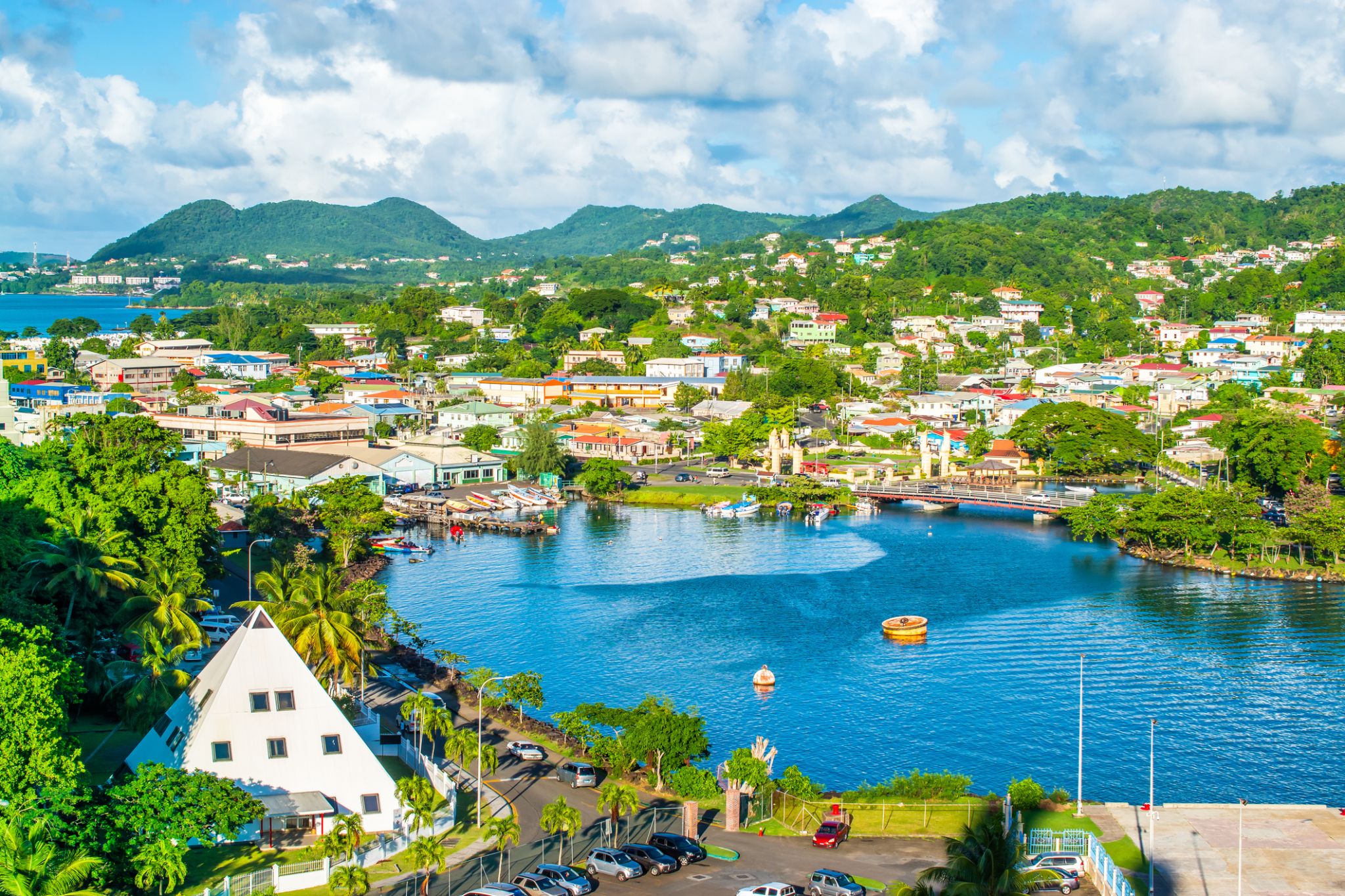
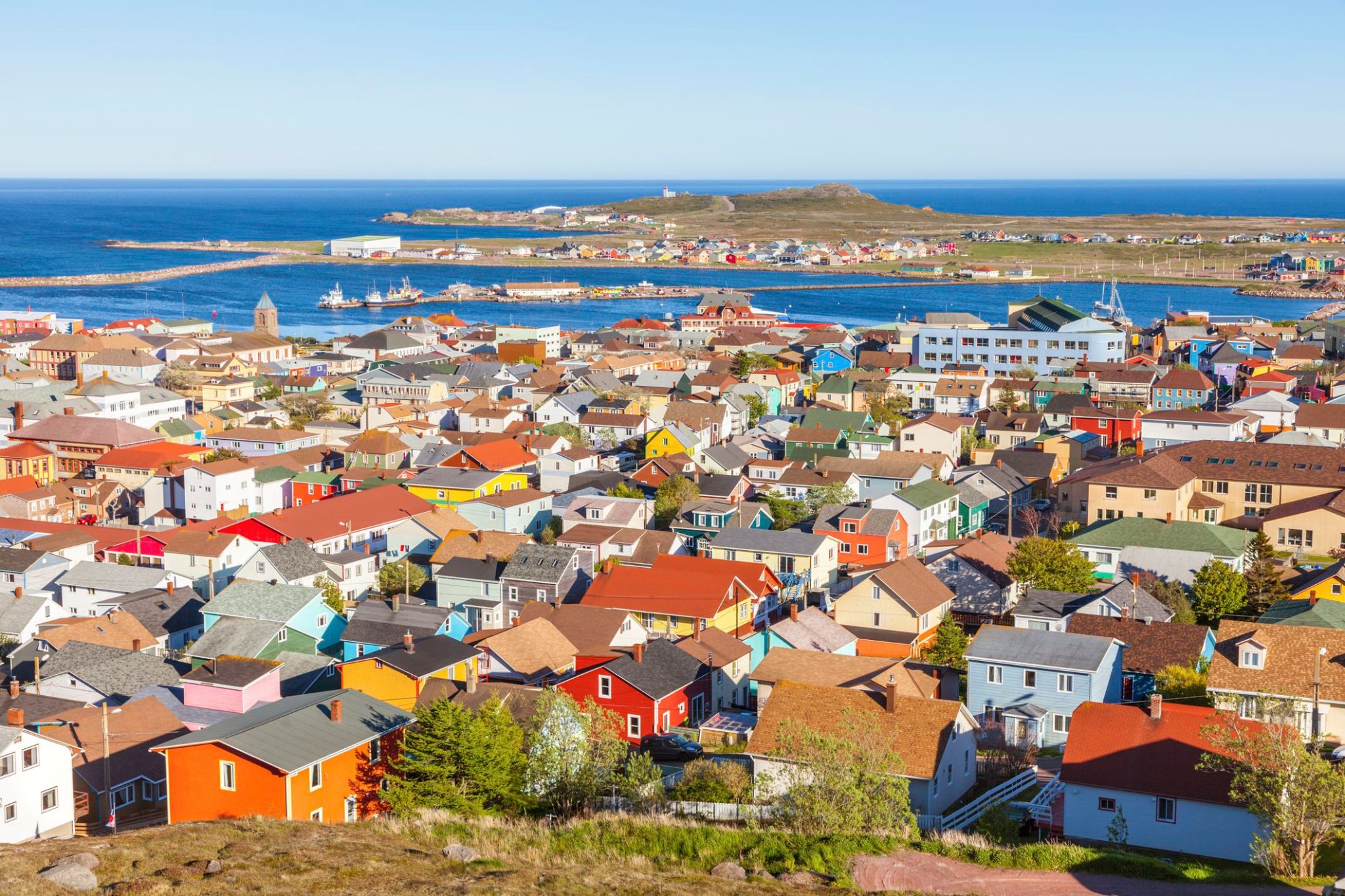
Saint Pierre and Miquelon is a tiny French archipelago located off the coast of Canada’s Newfoundland and Labrador province. It's the last remnant of French territory in North America, where the euro is used, French laws apply, and streets feel distinctly European—with bakeries, baguettes, and colorful houses set against the rugged North Atlantic backdrop.
The archipelago includes two main islands—lively Saint Pierre and the wilder, more spacious Miquelon. Visitors can witness whale migrations, hike scenic trails, or explore on bikes and snowshoes. A curious fact: during the U.S. Prohibition era, Saint Pierre served as a key hub for alcohol smuggling, a story still told in the local museum.
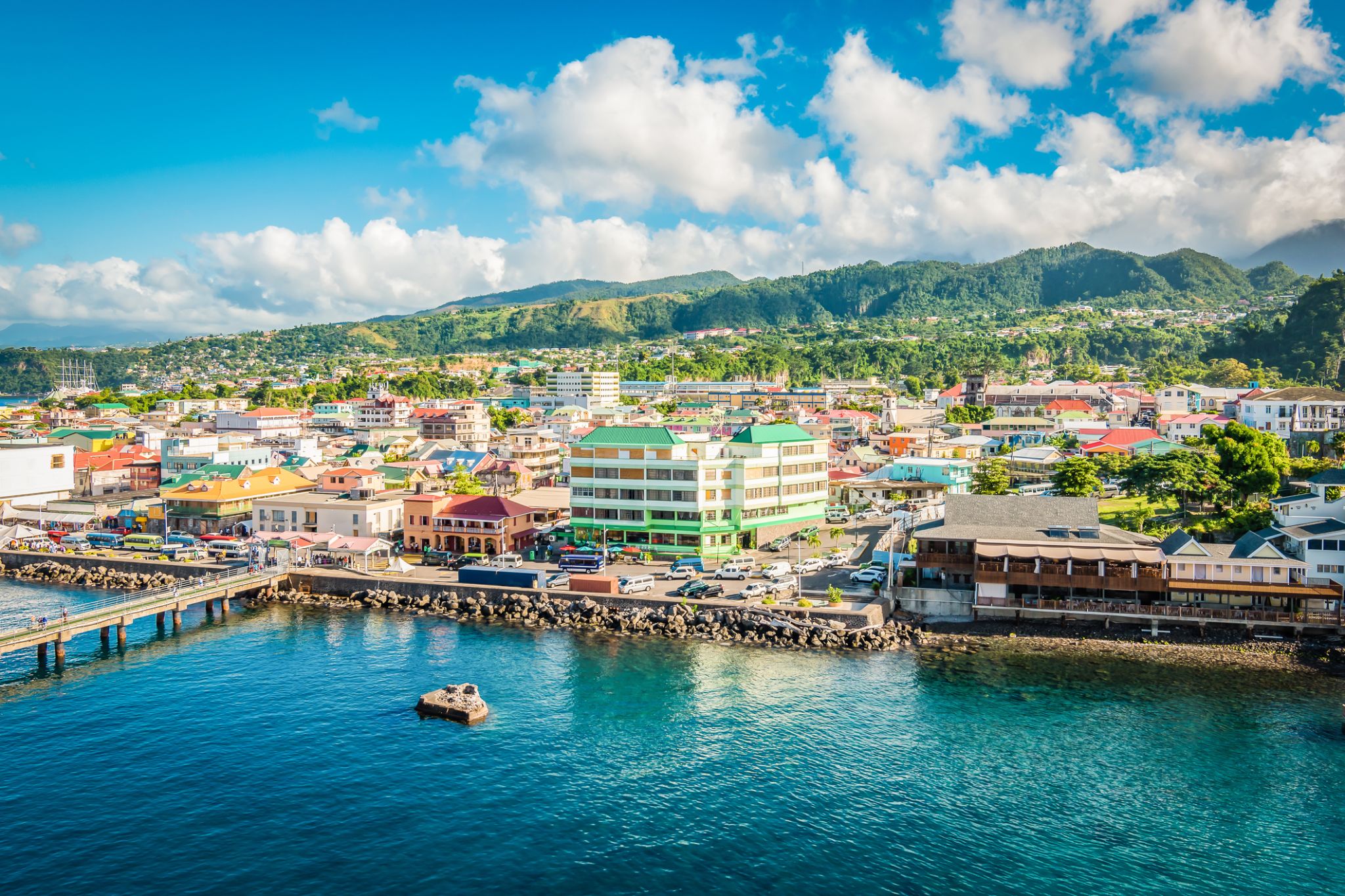
Dominica, officially the Commonwealth of Dominica, is an island country in the West Indies. The capital, Roseau, is located on the western side of the island. It is part of the Windward Islands in the Lesser Antilles archipelago in the Caribbean Sea. The island is located near Guadeloupe to the northwest and Martinique to the south-southeast. Its area is 750 km2 (290 sq mi), and the highest point is Morne Diablotins, at 1,447 m (4,747 ft) in elevation. The population was 71,293 at the 2011 census. The Commonwealth of Dominica is one of the Caribbean's few republics.
The island was originally inhabited by the Kalinago and later colonised by Europeans, predominantly by the French from the 1690s to 1763. Columbus is said to have passed the island on Sunday 3 November 1493, and the island's name is derived from the Latin for "Sunday". Great Britain took possession in 1763 after the Seven Years' War, and it gradually established English as its official language. The island republic gained independence in 1978.
Its name is pronounced with emphasis on the third syllable, related to its French name of Dominique. Dominica has been nicknamed the "Nature Isle of the Caribbean" for its natural environment. It is the youngest island in the Lesser Antilles, and in fact it is still being formed by geothermal-volcanic activity, as evidenced by the world's second-largest hot spring, called Boiling Lake. The island has lush mountainous rainforests, and it is the home of many rare plants, animals, and bird species. There are xeric areas in some of the western coastal regions, but heavy rainfall occurs inland. The Sisserou parrot, also known as the imperial amazon and found only on Dominica, is the island's national bird and featured on the national flag, which is one of only two national flags containing the color purple.




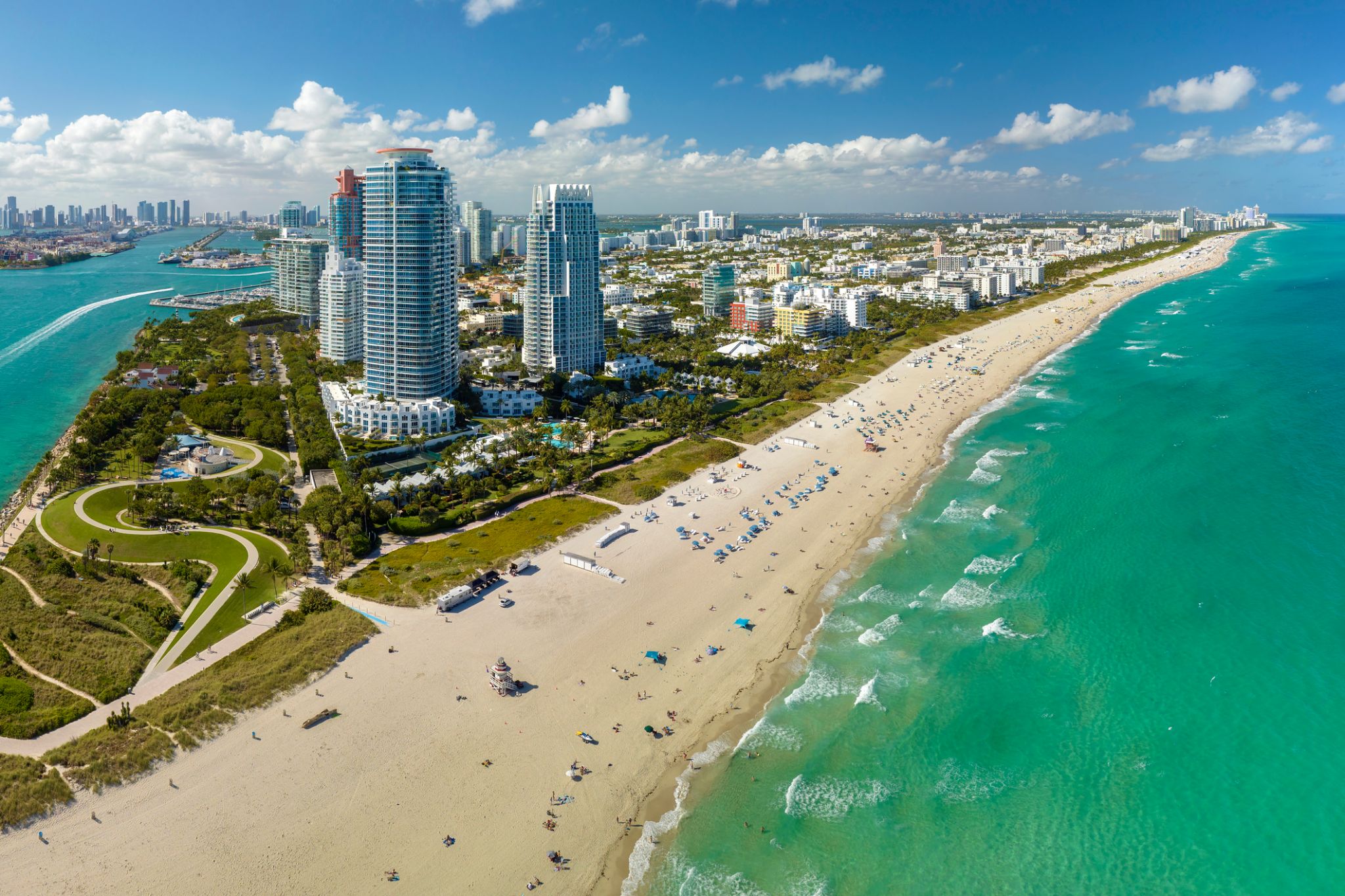
Miami, officially the City of Miami, is the cultural, economic and financial center of South Florida. Miami is the seat of Miami-Dade County, the most populous county in Florida. The city covers an area of about 56.6 square miles (147 km2), between the Everglades to the west and Biscayne Bay on the east; with a 2017 estimated population of 463,347, Miami is the sixth most densely populated major city in the United States. The Miami metropolitan area is home to 6.1 million people and the seventh-largest metropolitan area in the nation. Miami's metro area is the second-most populous metropolis in the southeastern United States and fourth-largest urban area in the U.S.
Miami is a major center, and a leader in finance, commerce, culture, media, entertainment, the arts, and international trade. The Miami Metropolitan Area is by far the largest urban economy in Florida and the 12th largest in the United States with a GDP of $344.9 billion as of 2017. In 2012, Miami was classified as an "Alpha−" level world city in the World Cities Study Group's inventory. In 2010, Miami ranked seventh in the United States and 33rd among global cities in terms of business activity, human capital, information exchange, cultural experience, and political engagement. In 2008, Forbes magazine ranked Miami "America's Cleanest City", for its year-round good air quality, vast green spaces, clean drinking water, clean streets, and citywide recycling programs. According to a 2009 UBS study of 73 world cities, Miami was ranked as the richest city in the United States, and the world's seventh-richest city in terms of purchasing power. Miami is nicknamed the "Capital of Latin America" and is the largest city with a Cuban-American plurality.
Greater Downtown Miami has one of the largest concentrations of international banks in the United States, and is home to many large national and international companies. The Civic Center is a major center for hospitals, research institutes, medical centers, and biotechnology industries. For more than two decades, the Port of Miami, known as the "Cruise Capital of the World", has been the number one cruise passenger port in the world. It accommodates some of the world's largest cruise ships and operations, and is the busiest port in both passenger traffic and cruise lines. Metropolitan Miami is also a major tourism hub in the southeastern U.S. for international visitors, ranking number two in the country after New York City.